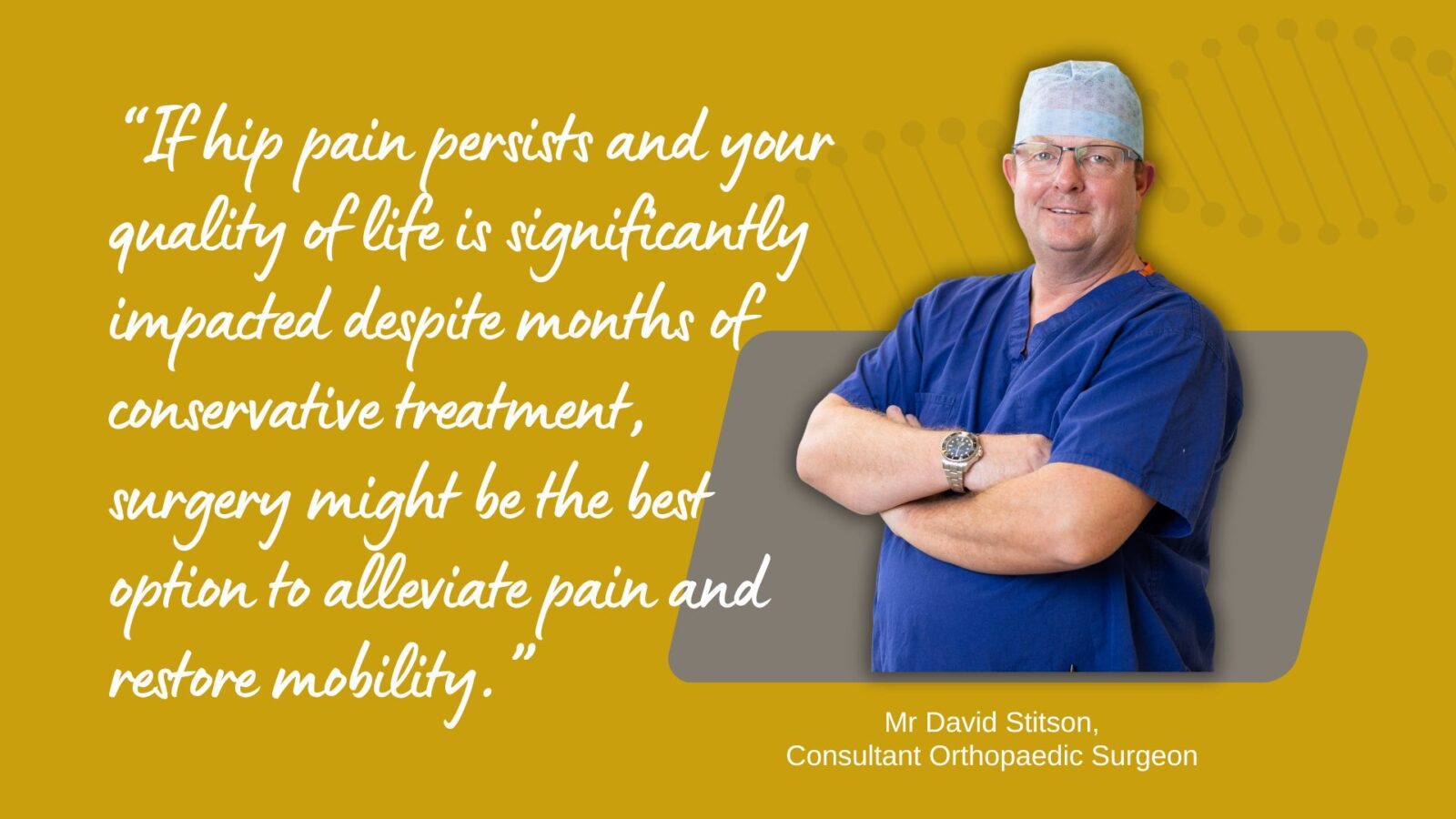Recovery from hip surgery is a critical period that requires careful attention and strategy to ensure effective hip replacement recovery.
Adhering to a well-planned recovery program can significantly speed up your healing process and improve the long-term health of your new hip joint.
Contents
ToggleListening to Your Body After a Hip Replacement
One of the most crucial elements in hip surgery recovery is learning to listen to your body. Each person experiences healing differently, and what works for one might not be suitable for another. It is essential to pay attention to how your body responds to various exercises and activities.
– Pain as a Warning Sign: While some discomfort is expected after hip surgery, sharp or persistent pain indicates that you might be pushing too hard. If pain occurs, it is essential to modify or stop the activity until you consult with your healthcare provider. Don’t try to push through pain, as it may lead to setbacks in your recovery.
– Monitor Swelling and Bruising: Swelling and bruising are common after surgery, but they should gradually decrease over time. If you notice any sudden increases, speak with Mr Stitson to prevent complications.
– Rest When Needed: Though it is important to stay active, your body also needs periods of rest to heal. Ensure you are getting enough sleep at night and rest during the day as required.
Consistency in Exercise Routine
Establishing and maintaining a consistent exercise routine is essential for strengthening your new hip joint. This supports flexibility, enhances mobility and builds strength, which are all critical components of a successful recovery.
– Start Slowly: Begin with gentle exercises recommended by your physiotherapist, such as ankle pumps and short walks. Gradually increase the intensity and duration as you build strength and confidence.
– Set Realistic Goals: It is important to set achievable goals that match your current level of ability. Short-term goals should keep you motivated, while long-term goals provide direction in your recovery journey.
– Incorporate Variety: A varied routine that includes different types of exercises can help target multiple muscle groups and prevent boredom. This might involve balance exercises, resistance training, and stretching, adapted to your progress level.
– Track Your Progress: Keeping a journal to track your exercises and any symptoms you experience can help you notice improvements, identify trends and share accurate information with your healthcare team.
Consistency enables your body to adapt positively to the demands of physical activities, providing strength and stability for your new joint over time. Always remember, safe and effective recovery is about finding the right balance between activity and rest, tailored to your personal needs and pace.
1. Early Stage Hip Exercises
Angle Pumps, Quadriceps Sets, Heel Slides.

2. Intermediate Stage Hip Exercises
Standing Hip Abduction, Mini Squats, Calf Raises.

3. Advanced Stage Hip Exercises
Lunges, Side Leg Raises, Bridges.

Effective Hip Replacement Recovery FAQs
Q: How soon can I start strengthening exercises after hip replacement surgery?
A: Typically, patients can begin light strengthening exercises under guidance from a physiotherapist within the first few days of surgery. Your healthcare provider will tailor a schedule based on your individual recovery.
Q: Are there specific activities I should avoid?
A: Yes, it’s advisable to avoid high-impact activities such as running or jumping to prevent strain on your new hip joint. Stick to low-impact exercises like swimming, cycling, or walking.
Q: How do I know if I'm overexerting my new hip joint?
A:Experience increased pain, swelling or a decrease in range of motion may be signs of overexertion. It Is important to listen to your body and rest when necessary.
Q: Can strengthening exercises completely restore my hip function?
A: While strengthening exercises significantly aid in recovery and mobility, full restoration depends on various factors such as age, weight and adherence to rehabilitation. Consistent effort will lead to improved joint function and quality of life.
About Hip Surgery
Total hip replacement surgery replaces the worn-out painful and stiff hip joint with a new prosthetic joint. This procedure is normally performed under spinal anaesthesia and is commonly followed by a night or two in the hospital. Day-case hip replacement surgery may be an appropriate option for you.

About Mr Stitson
David Stitson is a Plymouth-based Consultant Trauma and Orthopaedic Surgeon.Trained both in the UK and internationally, he has worked in medicine for more than 20 years for the NHS, for the Royal Air Force and in private practice. Mr Stitson operates privately at the Nuffield Health Hospital, Plymouth.






